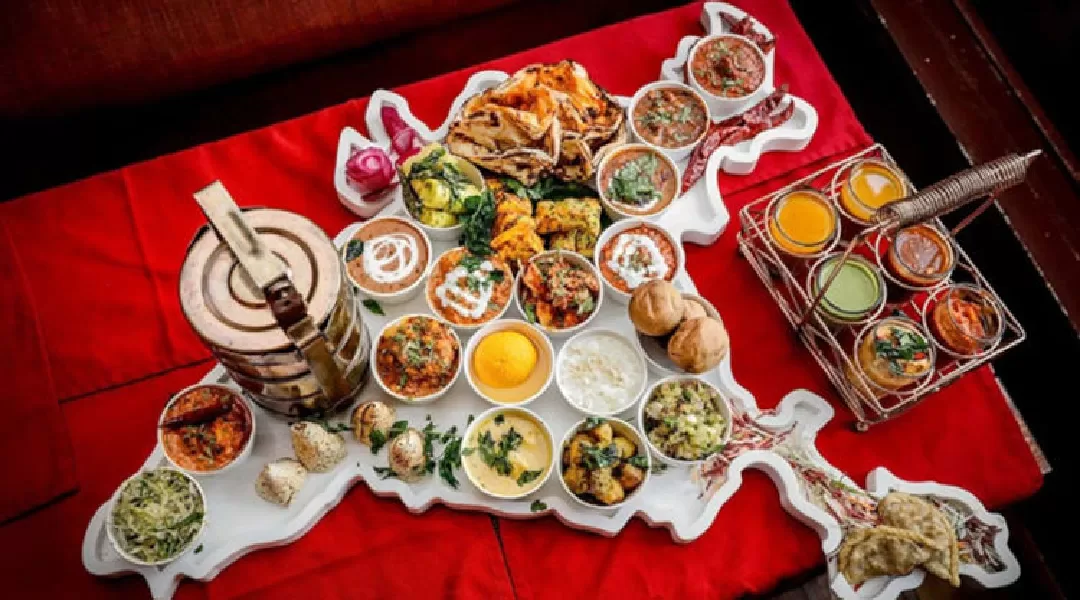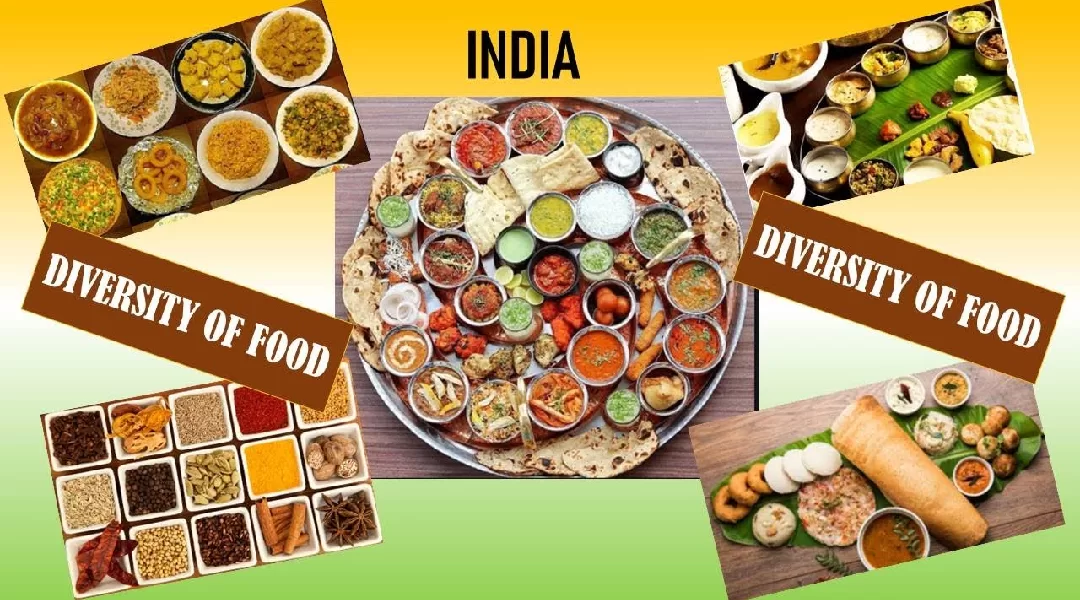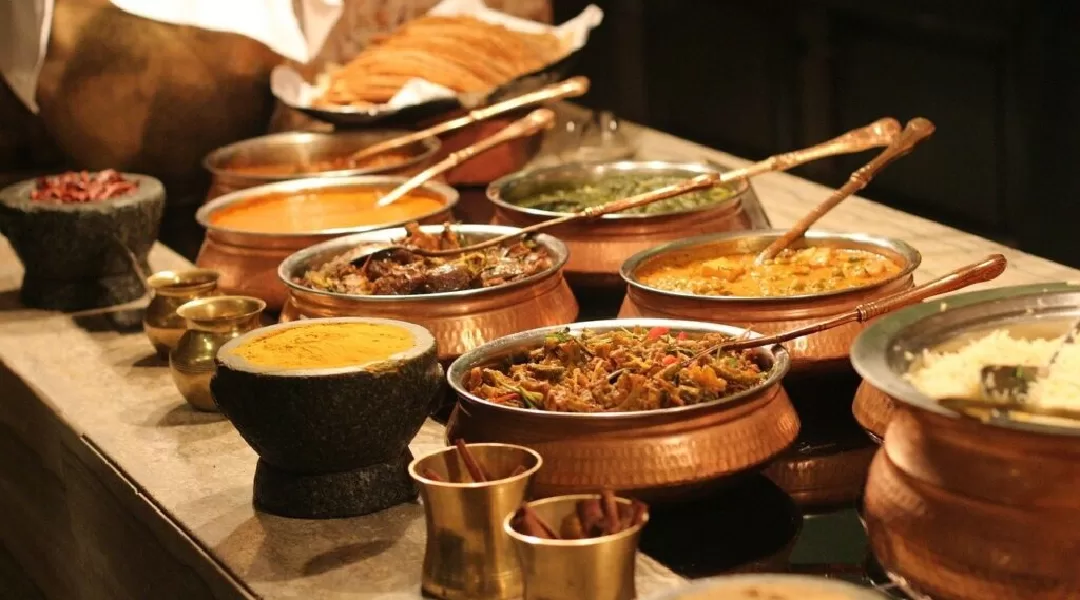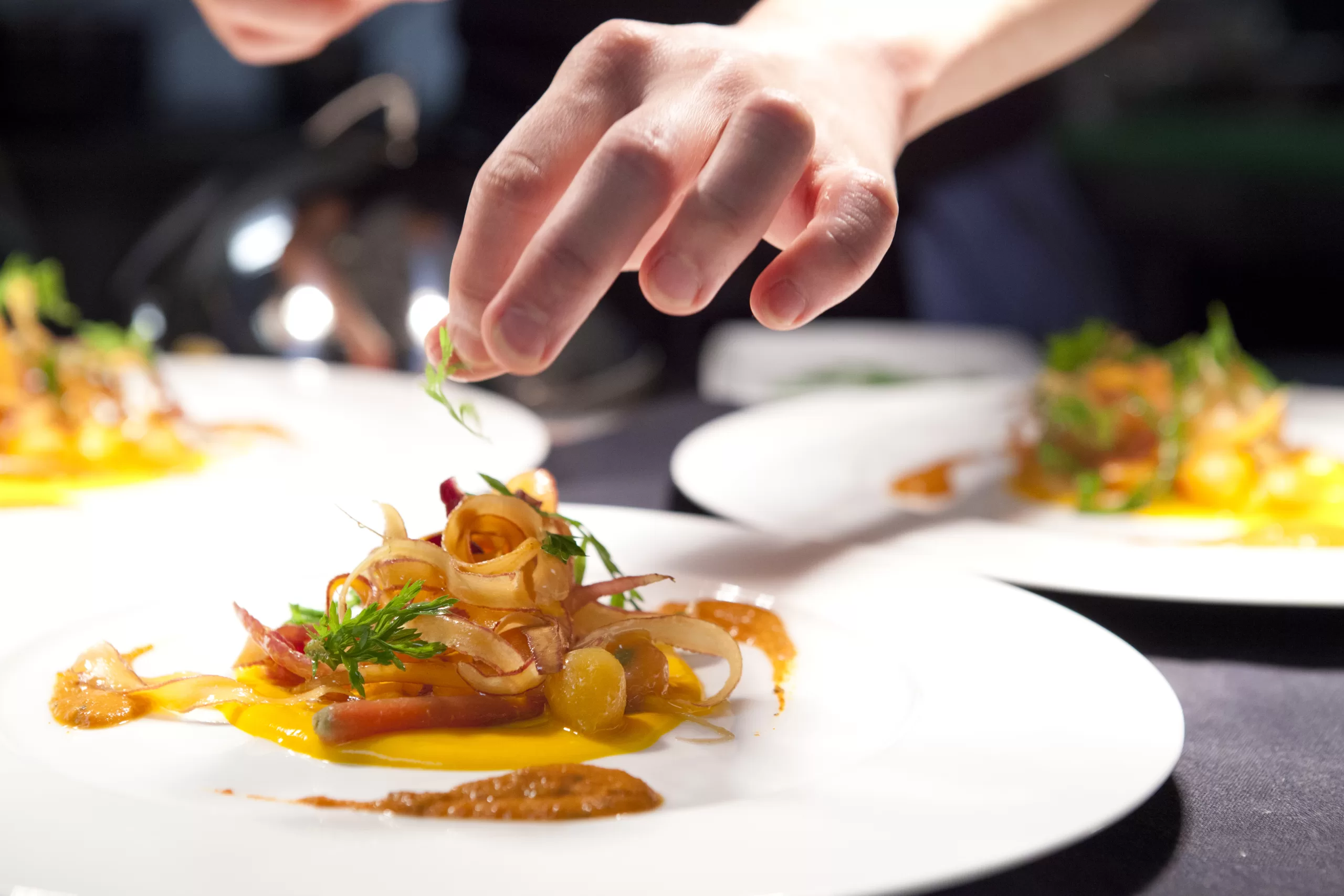- Part 1: The Secret Ingredient in the Indian Restaurant Industry (2024) - Unveiling the Recipe for Success
- Introduction
- The Rise of Indian Cuisine
- The Secret Ingredient Revealed
- Sourcing Authentic Ingredients
- Traditional Cooking Methods
- The Not-So-Secret Ingredients: Essential Elements for Success
- The Secret Sauce: Building a Strong Brand Identity explain
- Part 2: The Recipe for Success: FAQs and Additional Considerations
- Frequently Asked Questions (FAQs) - Unveiling Your Doubts
- Additional Considerations for Success: Spices in the Recipe
Part 1: The Secret Ingredient in the Indian Restaurant Industry (2024) – Unveiling the Recipe for Success
Introduction
In “The Secret Ingredient in the Indian Restaurant Industry (2024) – Unveiling the Recipe for Success,” we embark on a journey to uncover the unique elements driving the success of Indian restaurants in today’s culinary landscape. This introduction sets the stage by highlighting the transformative impact of Indian cuisine on global gastronomy and explores the strategic components that contribute to the industry’s resilience and growth.
Indian cuisine is renowned worldwide for its rich flavors, diverse regional influences, and centuries-old culinary traditions. In recent years, it has not only gained popularity but has also evolved into a symbol of cultural fusion and culinary innovation. This evolution is a testament to the adaptability and enduring appeal of Indian flavors in catering to diverse palates and preferences across the globe.
Central to this exploration is the revelation of key success factors that distinguish thriving Indian restaurants. From the meticulous selection and fusion of ingredients to the artful presentation of dishes, each aspect plays a pivotal role in creating a memorable dining experience. Moreover, the strategic integration of technology, the emphasis on customer-centric service, and the cultivation of a vibrant dining ambiance further enhance the allure of Indian restaurants.
This book delves into case studies, expert insights, and industry trends to demystify the strategies behind sustainable success in the Indian restaurant sector. By uncovering these “secret ingredients,” we aim to empower restaurateurs and culinary enthusiasts alike with actionable knowledge and inspiration. Whether navigating challenges or capitalizing on opportunities, understanding these elements promises to illuminate pathways toward culinary excellence and business achievement in an ever-evolving global market.

The Rise of Indian Cuisine
The rise of Indian cuisine on the global stage is a testament to its rich culinary heritage, diverse flavors, and widespread cultural influence. Over the past few decades, Indian food has transcended its traditional boundaries to become a global phenomenon, captivating taste buds and gaining recognition for its complexity and depth.
Culinary Diversity and Flavor Complexity
Indian cuisine is renowned for its diversity, stemming from a vast array of regional cuisines, each characterized by unique ingredients, spices, and cooking techniques. From the fiery curries of North India to the coconut-infused dishes of South India, the cuisine offers a spectrum of flavors that cater to a wide range of tastes.
Cultural Influence and Adaptation
Beyond its culinary appeal, Indian food embodies a cultural tapestry woven from centuries of trade, migration, and historical influences. The incorporation of spices like cardamom, cumin, and turmeric, along with cooking methods such as tandoor grilling and slow simmering, reflects India’s historical interactions with diverse cultures and civilizations.
Global Popularity and Adaptation
In recent years, Indian cuisine has adapted to global palates while retaining its authenticity. Restaurant industry worldwide have embraced Indian flavors, often infusing traditional recipes with local ingredients or techniques to create fusion dishes that appeal to a broader audience. This adaptability has contributed to the cuisine’s widespread popularity and integration into mainstream culinary scenes across continents.
Culinary Innovation and Recognition
Indian chefs and restaurateurs have played a crucial role in elevating the profile of Indian cuisine through culinary innovation and creativity. From Michelin-starred restaurants showcasing refined interpretations of traditional dishes to street food vendors offering authentic flavors in casual settings, the diversity of Indian culinary offerings continues to expand, garnering acclaim and recognition on international culinary stages.
Future Outlook
Looking ahead, the trajectory of Indian cuisine appears promising, driven by ongoing globalization, culinary experimentation, and a growing appreciation for diverse food experiences. As Indian chefs continue to push boundaries and adapt to evolving consumer preferences, the rise of Indian cuisine seems set to continue, solidifying its place as a beloved and influential component of the global culinary mosaic.

The Secret Ingredient Revealed
“The Secret Ingredient Revealed” refers to the core element or strategy that distinguishes successful ventures within a specific context, such as the Indian restaurant industry. This concept suggests that behind every thriving business or phenomenon lies a key factor that contributes significantly to its success.
In the context of Indian restaurants, the “secret ingredient” could metaphorically represent several critical components:
Culinary Excellence: Mastery of traditional recipes, skillful use of spices, and consistent quality in food preparation are foundational to attracting and retaining customers. Restaurant industry that excel in maintaining high culinary standards often become known for their authenticity and taste.
Innovative Fusion: Successfully blending traditional Indian flavors with modern culinary trends or local preferences can set a restaurant apart. This innovation attracts a broader customer base while retaining the essence of Indian cuisine.
Customer Experience: Prioritizing exceptional service, ambiance, and personalized interactions enhances the overall dining experience. Creating a welcoming atmosphere where patrons feel valued and immersed in Indian culture contributes to repeat business and positive word-of-mouth.
Strategic Marketing: Effective promotion and branding strategies that highlight unique offerings, engage customers through social media, and cultivate a strong online presence can significantly impact visibility and patronage.
Adaptability and Resilience: Restaurants that can adapt to changing market demands, incorporate sustainable practices, and navigate challenges such as supply chain disruptions or regulatory changes demonstrate resilience and long-term viability.
Innovative Fusion: Successfully blending traditional Indian flavors with modern culinary trends or local preferences can set a restaurant industry apart. This innovation attracts a broader customer base while retaining the essence of Indian cuisine.

Sourcing Authentic Ingredients
Sourcing authentic ingredients is paramount for Indian restaurants to maintain the integrity and quality of their dishes, ensuring an authentic culinary experience for patrons. Here’s how restaurants can effectively manage this process:
Direct Sourcing from Suppliers: Establish direct relationships with trusted suppliers who specialize in Indian ingredients. This ensures reliable access to authentic spices, grains, lentils, and specialty items required for traditional recipes.
Importing from India: For unique or region-specific ingredients not readily available locally, importing directly from India can guarantee authenticity. This may involve navigating import regulations and logistics to ensure freshness and quality.
Local Farmers and Markets: Collaborate with local farmers or visit ethnic markets that stock fresh produce and herbs commonly used in Indian cooking. This supports local businesses while providing access to seasonal and locally sourced ingredients that align with traditional flavors.
Quality Assurance: Conduct rigorous quality checks and inspections to verify the authenticity and freshness of ingredients upon delivery. This includes checking for purity in spices, freshness in vegetables, and proper storage conditions for perishable items.
Menu Adaptability: Adjust menus based on ingredient availability and seasonality while maintaining authenticity. This flexibility ensures consistency in flavor profiles while accommodating variations in ingredient supply.
Educating Staff: Train kitchen staff about the origins, qualities, and proper handling of each ingredient to preserve authenticity in preparation methods and flavors.
Transparency with Customers: Communicate sourcing practices and ingredient origins to customers through menu descriptions or server explanations. This transparency builds trust and enhances the dining experience by educating patrons about the authenticity of their meal.

Traditional Cooking Methods
Traditional cooking methods are fundamental to the authenticity and distinctive flavors of Indian cuisine. These methods, often passed down through generations, reflect the cultural diversity and regional nuances of Indian culinary traditions:
Tandoor Cooking: The tandoor, a traditional clay oven, is central to North Indian cuisine. It uses high heat to cook meats, breads like naan and roti, and even vegetables, imparting a smoky flavor and tender texture.
Curry Preparation: The art of making curry involves slow cooking spices and ingredients to develop complex flavors. Techniques like tempering (tadka) involve heating spices in oil or ghee to release their aromas before adding them to dishes.
Dum Cooking: Dum cooking involves sealing ingredients in a pot with dough or cloth and slow-cooking them over low heat. This method allows flavors to meld and intensify while retaining moisture and tenderness.
Grinding and Blending: Freshly grinding spices and herbs using a mortar and pestle (sil batta) or traditional stone grinders preserves their essential oils and enhances their aromatic qualities, crucial for authentic flavors.
Frying (Bhunao): Frying spices and aromatics in oil or ghee until they release their flavors and turn golden brown (bhunao) is a technique used to create base flavors in many Indian dishes.

The Not-So-Secret Ingredients: Essential Elements for Success
In the thriving Indian restaurant industry, success is shaped by several key elements that, while not necessarily secret, are critical for establishing and maintaining a successful restaurant. These ingredients encompass a blend of culinary excellence, strategic business acumen, cultural authenticity, and customer-centric approaches.
Culinary Excellence
At the heart of any successful Indian restaurant is an unwavering commitment to culinary excellence. This entails the use of high-quality, authentic ingredients and the mastery of traditional cooking techniques. Indian cuisine is celebrated for its rich and diverse flavors, and maintaining this standard is crucial. Skilled chefs who can artfully blend spices and create dishes that capture the essence of India’s regional flavors are invaluable. Continual innovation in menu offerings, while staying true to authentic tastes, can also set a restaurant industry apart.
Strategic Business Acumen
Running a successful restaurant requires more than just great food; it demands strategic business planning and management. Effective marketing strategies, such as leveraging social media and digital platforms, are essential to attract and retain customers. Location selection, pricing strategies, and cost management also play vital roles. A well-thought-out business plan that includes clear goals, target demographics, and a roadmap for growth can help navigate the competitive landscape of the restaurant industry.
Cultural Authenticity
Indian restaurants that succeed on a global scale often prioritize cultural authenticity. This extends beyond the menu to encompass the overall dining experience. Authentic décor, traditional music, and attentive service contribute to creating an immersive cultural experience for diners. This authenticity resonates with customers seeking a genuine taste of India, whether they are familiar with the cuisine or exploring it for the first time.
Customer-Centric Approaches
Exceptional customer service is a cornerstone of success in the restaurant industry. Personalized service, attention to detail, and creating memorable dining experiences foster customer loyalty. Engaging with customers, understanding their preferences, and responding to feedback can significantly enhance satisfaction. Additionally, initiatives like loyalty programs, special events, and community involvement can build a strong, loyal customer base.
Adaptability and Innovation
The ability to adapt and innovate is another crucial ingredient. The Indian restaurant industry, like any other, faces changing trends and challenges. Successful establishments are those that can evolve, whether by integrating new technology for a seamless dining experience, adapting to dietary trends such as veganism or gluten-free options, or diversifying their offerings to include fusion dishes that appeal to a broader audience.
Community Engagement
Building strong ties with the community can also contribute to a restaurant’s success. This can be achieved through participation in local events, collaborations with other businesses, and initiatives that give back to the community. A strong community presence enhances a restaurant’s reputation and fosters a loyal customer base.

The Secret Sauce: Building a Strong Brand Identity explain
Building a strong brand identity for an Indian restaurant involves crafting a distinct and memorable image that resonates with customers and sets the establishment apart from competitors. Here’s how to create that secret sauce:
Authenticity and Consistency: Ensure that every aspect of the restaurant industry—from the menu to the décor and customer service—reflects authentic Indian culture and cuisine. Consistency in delivering this authenticity builds trust and loyalty among patrons.
Unique Value Proposition: Define what makes the restaurant industry special. Whether it’s a focus on regional specialties, a modern twist on traditional recipes, or exceptional service, clearly communicate this unique value proposition to customers.
Visual Branding: Design a logo and visual identity that evoke the essence of Indian cuisine. Use colors, fonts, and imagery that reflect the vibrancy and richness of Indian culture. Consistency in visual branding across menus, signage, and online platforms reinforces brand recognition.
Customer Experience: Prioritize customer satisfaction at every touchpoint. Provide attentive service, personalized interactions, and a welcoming ambiance that enhances the dining experience. Encourage feedback and use it to continuously improve.
Storytelling: Share the restaurant’s story—its origins, inspirations, and journey. Storytelling adds depth to the brand, resonates with customers on an emotional level, and fosters a connection that goes beyond food.
Community Engagement: Engage with the local community through partnerships, events, or charitable initiatives. Building relationships outside the restaurant industry enhances brand visibility and loyalty.
Online Presence: Maintain a strong online presence through a user-friendly website and active presence on social media. Share updates, interact with customers, and showcase the restaurant’s personality and offerings.
Quality and Innovation: Uphold high standards in food quality and service. Innovate with new dishes, seasonal specials, or unique dining experiences that keep customers excited and coming back.

Part 2: The Recipe for Success: FAQs and Additional Considerations
Frequently Asked Questions (FAQs) – Unveiling Your Doubts
Q: What are the biggest challenges faced by Indian restaurants in 2024?
A: 1. Supply Chain Disruptions: Fluctuations in ingredient availability and prices.
- Labor Shortages: Difficulty in hiring and retaining skilled staff.
- Regulatory Compliance: Adhering to health, safety, and zoning laws.
- Competition: Intense rivalry in a saturated market.
- Technological Integration: Adapting to digital ordering and delivery systems.
Q: How can Indian restaurants compete with the growing popularity of international cuisines?
- Highlight Unique Flavors: Emphasize distinctive spices and regional specialties.
- Innovate Menu: Introduce fusion dishes combining Indian and international flavors.
- Authentic Ambiance: Create a culturally immersive dining experience.
- Effective Marketing: Showcase unique offerings through targeted promotions.
- Customer Engagement: Provide personalized and exceptional service.
Q: How can Indian restaurants cater to the growing demand for healthy and sustainable options?
- Incorporate Fresh, Local Ingredients: Source seasonal produce and organic ingredients to ensure freshness and reduce carbon footprint.
- Offer Health-Conscious Dishes: Introduce menu items that are low in calories, fat, and sugar, emphasizing grilled, baked, and steamed options.
- Expand Plant-Based Options: Provide a variety of vegetarian and vegan dishes using legumes, vegetables, and plant-based proteins.
- Use Sustainable Practices: Implement eco-friendly practices such as reducing food waste, using biodegradable packaging, and minimizing energy consumption.
- Transparency in Sourcing: Clearly communicate the origins of ingredients and the restaurant industry commitment to sustainability.
- Promote Balanced Eating: Highlight nutritious dishes and offer customizable meal options to cater to different dietary needs.
Q: What are some tips for creating a memorable dining experience for customers?
- Ambiance: Create an inviting atmosphere with authentic decor, soothing lighting, and cultural music.
- Exceptional Service: Train staff to be attentive, friendly, and knowledgeable about the menu.
- Presentation: Serve dishes with artistic flair, focusing on vibrant colors and appealing plating.
- Unique Offerings: Include signature dishes or chef’s specials that stand out.
- Personal Touches: Remember regular customers’ preferences and personalize their dining experience.
- Interactive Elements: Offer live cooking stations or chef’s table experiences.
- Cleanliness: Maintain impeccable hygiene and a clean environment.
- Engagement:Gather customer feedback and make improvements based on their suggestions.
- Innovative Drinks: Provide a diverse selection of beverages, including unique cocktails and mock tails.

Additional Considerations for Success: Spices in the Recipe
In the dynamic and competitive Indian restaurant industry, additional considerations, akin to the right mix of spices in a recipe, play a crucial role in achieving success. These elements, when carefully balanced, enhance the overall dining experience and ensure long-term sustainability.
Quality Control
Maintaining high standards of food quality is paramount. Regularly sourcing fresh ingredients, adhering to consistent recipes, and conducting frequent quality checks can prevent variations in taste and presentation. Implementing strict hygiene protocols and food safety measures is also essential to build trust and ensure customer health.
Staff Training and Development
Investing in staff training ensures that employees are well-versed in food preparation, customer service, and safety standards. Providing opportunities for professional development, such as culinary courses or hospitality management training, can improve staff morale and performance. Happy, knowledgeable staff contribute significantly to a positive dining experience.
Technology Integration
Incorporating technology can streamline operations and enhance customer satisfaction. restaurant industry Utilizing modern point-of-sale systems, online reservation platforms, and digital menu displays can improve efficiency and convenience. Embracing social media and digital marketing can also expand reach and engagement, attracting new customers and retaining existing ones.
Cultural Authenticity and Innovation
Striking a balance between cultural authenticity and innovation is key. While traditional dishes and flavors should remain the cornerstone, incorporating modern twists and fusion cuisine can appeal to a broader audience. Regularly updating the menu with seasonal specials and chef’s creations keeps the offerings fresh and exciting.
Customer Feedback and Adaptation
Actively seeking and valuing customer feedback can provide valuable insights into what works and what needs improvement. Implementing a system for gathering reviews and comments, whether through comment cards, online surveys, or social media, helps in adapting and refining the dining experience.
Community Engagement
Building strong community ties can enhance a restaurant’s reputation and customer loyalty. Participating in local events, sponsoring community activities, and collaborating with nearby businesses create a positive local presence. Engaging in charitable activities or sustainability initiatives also reflects a commitment to social responsibility.
Effective Marketing Strategies
A well-planned marketing strategy is vital for visibility and growth. Leveraging online platforms, such as social media, Google Ads, and food delivery apps, can increase reach. Traditional marketing methods, like flyers, local newspaper ads, and word-of-mouth, remain effective. Regular promotions, loyalty programs, and special events can attract and retain customers.
Financial Management
Sound financial management ensures the restaurant’s sustainability. Keeping a close eye on costs, pricing strategies, and profit margins is essential. Regular financial audits, budget planning, and investing in cost-effective solutions can prevent financial pitfalls and promote steady growth.
Sustainability Practices
Adopting eco-friendly practices not only appeals to environmentally conscious consumers but also contributes to long-term savings. Reducing waste, using sustainable packaging, conserving energy, and sourcing locally can minimize the environmental impact and enhance the restaurant’s image.
Unique Selling Proposition (USP)
Identifying and promoting a unique selling proposition helps differentiate the restaurant industry from competitors. Whether it’s a signature dish, a unique dining concept, exceptional service, or a focus on health and sustainability, clearly communicating the USP attracts customers and fosters loyalty.
By carefully blending these additional considerations, Indian restaurant industry can create a compelling and memorable dining experience that not only delights customers but also ensures sustained success in a competitive industry.

About Author sudeshna mukherjee
You May Also Like…
Food Licensing Requirements for Indian Restaurants and Cloud Kitchens: What You Need to Know
IntroductionFood industry is the fastest growing business in India. If you are interested in investing and opening a...



